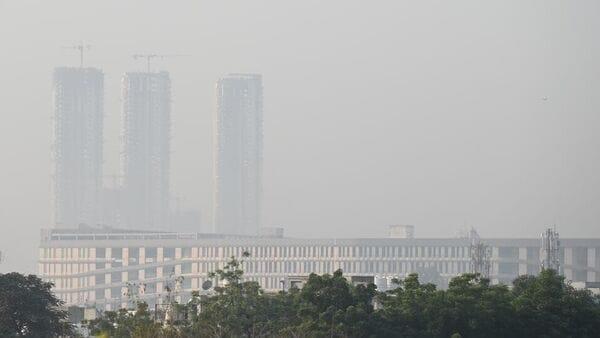
Delhi's Air Quality Drops To 'Very Poor' Ahead Of Diwali, Unlikely To Improve Soon
The decline in Delhi's air quality is attributed to unfavourable meteorological conditions due to dispersion of pollutants, the Union government's System of Air Quality and Weather Forecasting and Research (SAFAR) said in its latest bulletin. Emissions from sources such as stubble and waste burning are likely to deteriorate air quality significantly, it said.
Delhi's air quality index (AQI) was 310 on Monday, against 277 the previous day, according to the Central Pollution Control Board (CPCB). AQI is categorized in six groups-good (0-50), satisfactory (51-100), moderate (101-200), poor (201-300), very poor (301-400) and severe (401-500).
Also read: Govt proposes to amend pollution control norms to levy penalties, better compliance. Move to hit polluting industriesEvery winter, the national capital and its surrounding regions are blanketed in toxic smog, made worse by bursting firecrackers during Diwali. Burning stubble or leftover post-harvest straw in the farms of neighbouring states ahead of winter sowing aggravates the situation. That causes a surge in respiratory illness, and people also experience burning eyes, heart ailments, sore throats, skin allergies, among other health problems.
Stubble burningTo be sure, incidents of stubble burning Punjab, Haryana, Uttar Pradesh, Rajasthan, Delhi and Madhya Pradesh fell to 3,485 between 15 September and 20 October this year from 4,026 cases during the corresponding period last year, according to a Sunday bulletin from CREAMS-Indian Agricultural Research Institute, which monitors satellite data on crop residue, burning.
The Commission for Air Quality Management has deputed 26 central teams to hotspot districts in Punjab and Haryana to coordinate with district-level authorities to control paddy stubble burning.
Also see: The rising threat of air pollution in India's small citiesStubble burning is not merely an agricultural issue but a public health crisis that demands immediate and sustained intervention, said Ritwik Bahuguna, founder of Roots Foundation. "While we recognize that stubble burning accounted for approximately 1.3% to 2.4% of air pollution in recent assessments, its effects are exacerbated by meteorological conditions and contribute to the formation of hazardous smog during winter months.”
Official data from Pune's Indian Institute of Tropical Meteorology (IITM) revealed that burning post-harvest straw contributed a little over 1.3% to Delhi's air quality on 19 October, 2.3% on 20 October and 2.4% on Monday.
Other contributors to the poor air qualityVehicular emissions within Delhi remain the most significant contributor, accounting for around 14.2% on 18 October, which dropped to 11.2% on Saturday. Projections indicate it could decrease slightly further to 10.5% during subsequent days.
The institute said that a significant degree of pollution, ranging between 32% and 44%, is caused by sources not yet pinpointed, underscoring the complexity of effectively addressing Delhi's air quality challenges. This "unidentified" variable remains a critical area for research.
Firecrackers during Diwali also cause a spike in air pollution. The pollutants include harmful gases like sulphur dioxide, nitrogen dioxide, and particulate matter.
Also read | Indian cities and air pollution: It's time to get into mission modeAs a preventative measure, the Delhi Pollution Control Committee has completely banned manufacturing, storage, sale, and use of all types of firecrackers in the national capital until 1 January. Authorities in Punjab have also banned firecrackers. In Haryana's Gurugram, green crackers are allowed during Diwali celebrations
The CSIR-National Environmental Engineering Research Institute defines green crackers as firecrackers made with a reduced shell size, without ash, and/or with additives such as dust suppressants to reduce emissions with specific reference to particulate matter. These crackers come without barium compounds, a metal oxide that contributes to air and noise pollution and gives them the green colour.
The Commission for Air Quality Management has already activated Stage-I of the graded response action plan to combat air pollution in the National Capital Region by controlling dust at construction sites, enhancing road cleaning, ensuring proper waste disposal, curbing open burning of waste, and banning diesel generator usage. Among other measures, it also prohibits the use of coal or firewood use at eateries, and calls for stricter monitoring of polluting vehicles.
The government is also considering cloud-seeding as an emergency measure to reduce pollution. Legal Disclaimer:
MENAFN provides the
information “as is” without warranty of any kind. We do not accept
any responsibility or liability for the accuracy, content, images,
videos, licenses, completeness, legality, or reliability of the information
contained in this article. If you have any complaints or copyright
issues related to this article, kindly contact the provider above.


















Comments
No comment